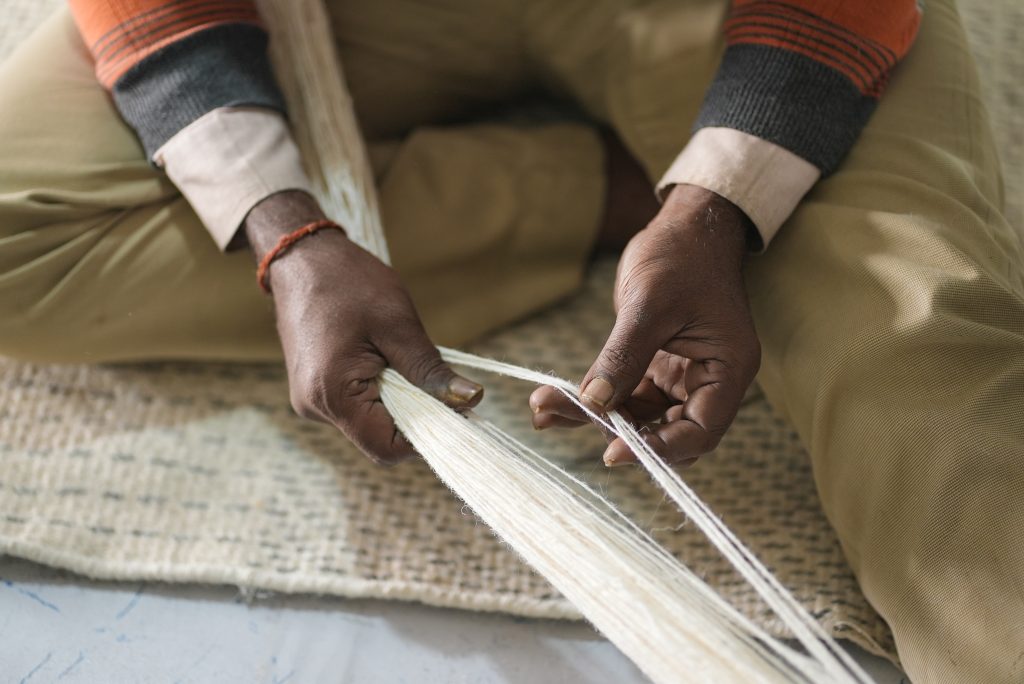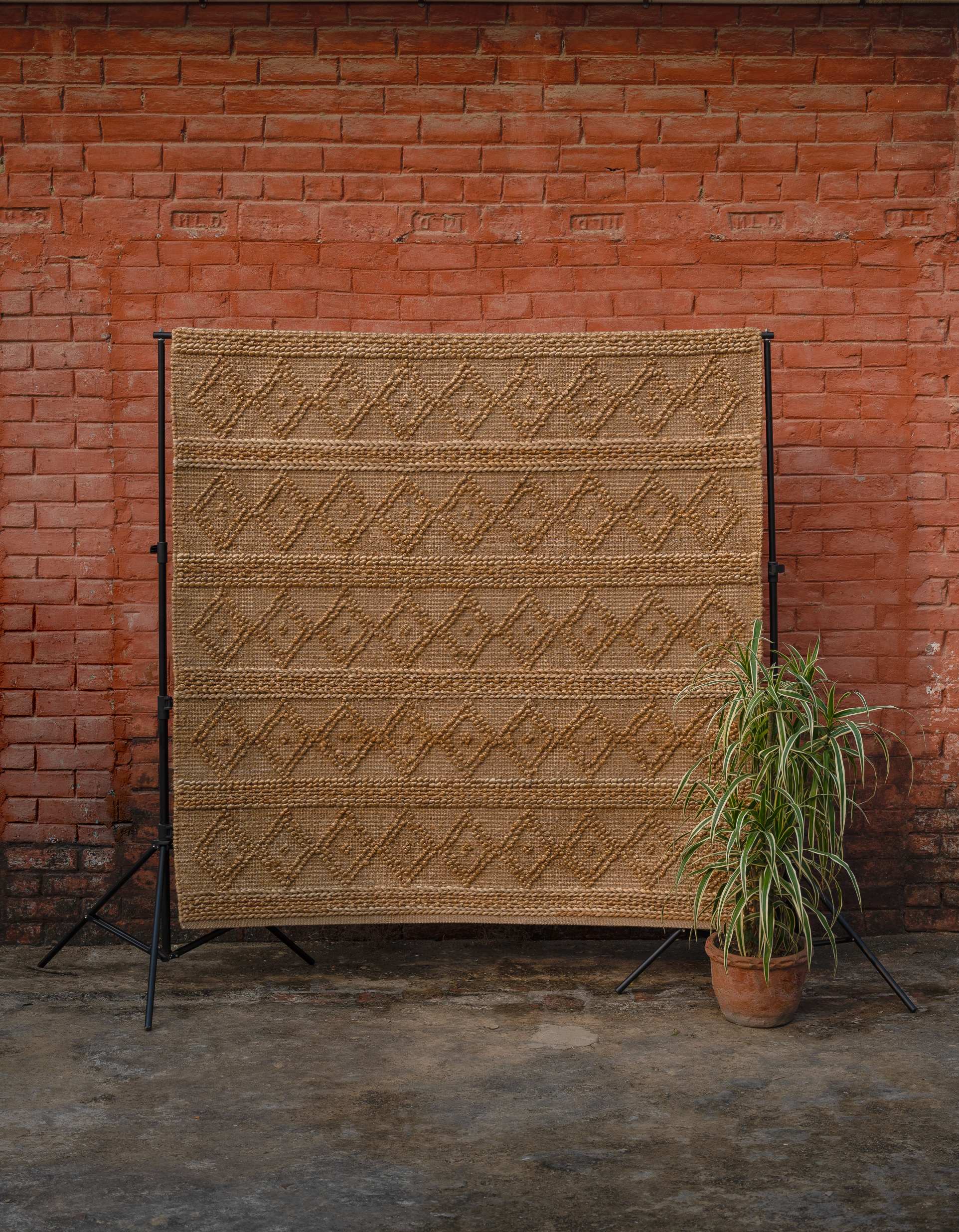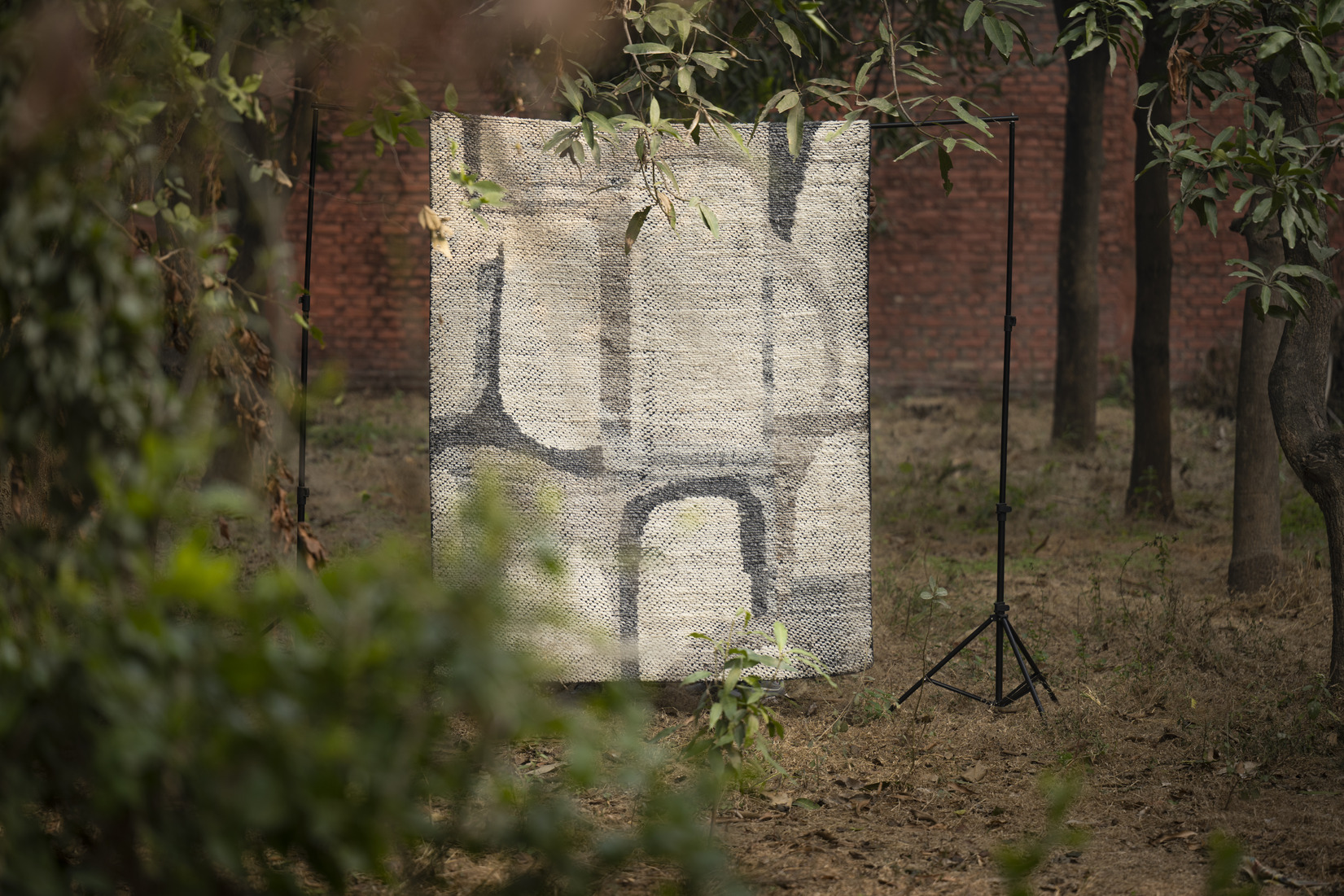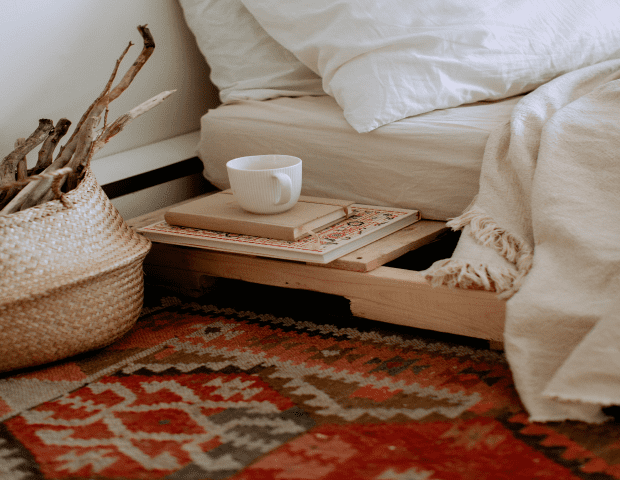- October 1, 2023

Debunking 7 Myths Around Handmade Rugs
Imagine a room with every inch talking about its own beauty. With its furnishings, drapery, and lights, trying to piece it all into a perfectly woven tale. Yet you feel it’s missing something luxurious yet necessary. An expansive spread that ties the room together. The Rug.
A story of dynasties, a touch of luxury, and an art endeavor. A rug is all combined. Yet, between the adventures of handmade and machine-made arises the bazaar of myths. Some question the timelessness of the handmade, and some rebuke its intricacies. Let’s unveil these myths of the rugs!
What (Exactly) Is A Handmade Rug?
A handmade rug is the product of crafting a rug using artisans’ bare hands. Creating a handmade rug involves crafting through the use of a handloom and differs based on the technique used.
Top Categories of Handmade Rugs:
- Hand Knotted Rug – Knotted by hand from the bottom to the top, the knotted fibres at the foundation make the ‘rug pile’ of hand-knotted rugs. Although this method is very laborious, the time taken largely depends on the intricacies of the rug design.
- Flat Weave/Hand Woven/Dhurrie/Kilim Rug – Handwoven on a loom, a flat weave rug has a very negligible height. The absence of a rug pile, which gives any rug its thickness, is the defining feature of a flat weave rug. Dhurrie and Kilim are types of flat weave rugs.
- Hand Tufted Rug – For a hand-tufted rug, the pile is inserted into a cloth foundation using a handheld drill gun, resulting in a loop pile. Covered with latex at its back, the coating is applied to hold the tufts in place. Using the gun speeds up the process of making a hand-tufted rug.
- Hand Loom Rug – Hand loom rugs are made using a manually operated loom, depicting the raw skill and artistry of a weaver. In turn, they organically develop an artisanal quality that is unique to every piece. Diverse in style, handloom rugs can be made with various materials, including cotton, wool, and silk, blending traditional techniques with contemporary design.
What (Exactly) Is A Machine-made Rug?
Mass-produced using automated power looms, machine-made rugs take significantly less time to make. While they may not be a one-of-a-kind piece, they definitely create symmetrical patterns nearing perfection. They have a lifespan of just about 20 years, and because of their speedy technique, they tend to be cheaper than handmade rugs. Nevertheless, they are always available in diverse colours, patterns, styles, fabrics, and textures.
7 Facts to Debunk Myths About Handmade Rugs
- Myth – ‘Handmade rugs are as durable as machine-made’
Reality – Handmade rugs are more durable than machine-made rugs.
Made with superior quality materials like natural fibres and skilled craftsmanship, handmade rugs only need proper care to increase their durability. While a machine-made rug could last about 20 years or less, handmade rugs last a lifetime. Ensuring a benchmark quality, these rugs possess the power to be passed down to generationsMachine-made rugs need more frequent replacement due to their comparatively sub-standard material qualities and fast-paced production.
- Myth – ‘Handmade rugs look the same as machine-made rugs’
Reality – Handmade rugs carry a distinct personalized look from machine-made rugs.
Each rug exhibits a personal flavour. Every handmade rug carries a distinct character due to the meticulous craftsmanship of weavers. These rugs are unique as no pattern, design, or weave is the same as the other. Hand-woven rugs showcase the artisans’ personal touch.
In contrast, machine-made rugs create a uniform, repetitive design enhanced by their consistency and design precision. - Myth – ‘Handmade rugs contribute to damaging the environment’
Reality – Handmade rugs utilise natural materials that make them sustainable.
From using naturally sourced materials like wool, cotton, and silk to PET Yarns, handmade rugs also use naturally dyed colours, creating lower environmental impact. Since each rug is woven by hand, these rugs do not require any kind of energy-intensive machinery. Apart from this, the labour-intensive method creates exemplary rugs with higher quality. A trait that elevates the lifespan of any rug.
Machine-made rugs are a product of energy-intensive machinery and synthetic materials that negatively impact the environment in the long run. - Myth – ‘Handmade rugs are just floor coverings’
Reality – Handmade rugs carry artistic, cultural, and historical importance.
Exhibiting the heritage of the artisans, handmade rugs are a combination of century-old wisdom, artisans’ passions, and an expression of art. Thousand of weavers and their families practice rug making as their passion and livelihood. Since the weavers carry this knowledge throughout generations, these rugs are part of a grand legacy.
On the other hand, machine-made rugs are notorious for their trendy designs that fade out to replace the next trend. - ‘Why do handmade rugs take time to produce’
Handmade rugs are woven manually by skilled artisans, producing rugs that stand the test of time.
Depending on the dimensions, designs, and technique, handmade rugs sometimes require months or years to complete. This labour-intensive method involves artisans making a conscious choice with each step, from spinning the yarn to dyeing it, weaving the rug, and finishing the fringes of the rug. The slow process is the cumulative knowledge that has been passed down from generation to generation.
That said, Yarns of the East, with the joint power of its three facilities, has proved it can produce Hand Tufted and Hand Loom rugs in about five weeks. This production time is comparatively faster than machine-made rugs, which can take up to eight weeks for the exact dimensions, offering a quick yet high-quality alternative for those seeking handmade rugs’ authentic, rich and unique essence. - Myth – ‘All rug construction is the same’
Reality – Handmade rugs involve various construction methods depending on the artisan’s techniques.
As mentioned above, handmade rugs involve a very detail-oriented method for their weaving. The technique varies from hand-knotted, hand-tufted, and flatweave based on the desired finish.
- Myth – ‘Handmade rugs are always a product of child labor /unethical practices’.
Reality – Handmade rugs can actually facilitate the growth of weavers’ communities and their families.
By partnering with organisations like CARE & FAIR, a worldwide association for Carpet Trade Against Child Labor, rug-making brands can help abolish illegal child labor and improve living conditions for weavers and their families. Scooping out a percentage of the revenue can empower children and their education.
Weaving Ahead of Time…..
Selecting rugs to suit the space they will be a part of will always be daunting. Your space can charm its guests by adding a flair of artisanal beauty and the generational wisdom of handmade rugs. Make an informed decision by understanding the exact type of rug.
Whatever your choice of rug, it can be made on order as desired. By choosing #RugsThatRepresent communities and elevating their socioeconomic well-being, you also choose a rug that delivers on the promise of being sustainable.
Visit Yarns of the East to customise your rug as desired.
Ciao, Until next time…
Stay In The Loop
Subscribe to our monthly newsletter and get inspired by the craftmanship and catch the latest trends in handmade rugs

Similar Stories

Handmade Rugs: More than just floor coverings
In this first edition of yote. stories, we’ll shed some light on how the use of rugs have evolved over time from being a precious item to now being a household utility that offers both functional and a decorative element.

Unraveling the Threads of Time: The Fascinating and Surprising History of Rugs
Dive into the fascinating history of rugs in our latest blog. Uncover the rich tapestry of rug origins and cultural significance.